Background: These posters were intended for use in schools to teach Nazi racial doctrines. I include nine of the posters in the book. My copy is missing posters 61-78, which deal with the Jews. The material stresses Nazi eugenics doctrine, and makes it clear that Germany would be better off if the “inferior” population was eliminated.
For those interested, I include the poster listing the full contents.
The source: Alfred Vogel, Erblehre, Abstammungs- und Rassenkunde in bildlicher Darstellung, 2nd edition (Stuttgart: Verlag für nationale Literatur Gebr. Roth, 1939).
Genetics, Genealogy, and Racial Science in Pictorial Form
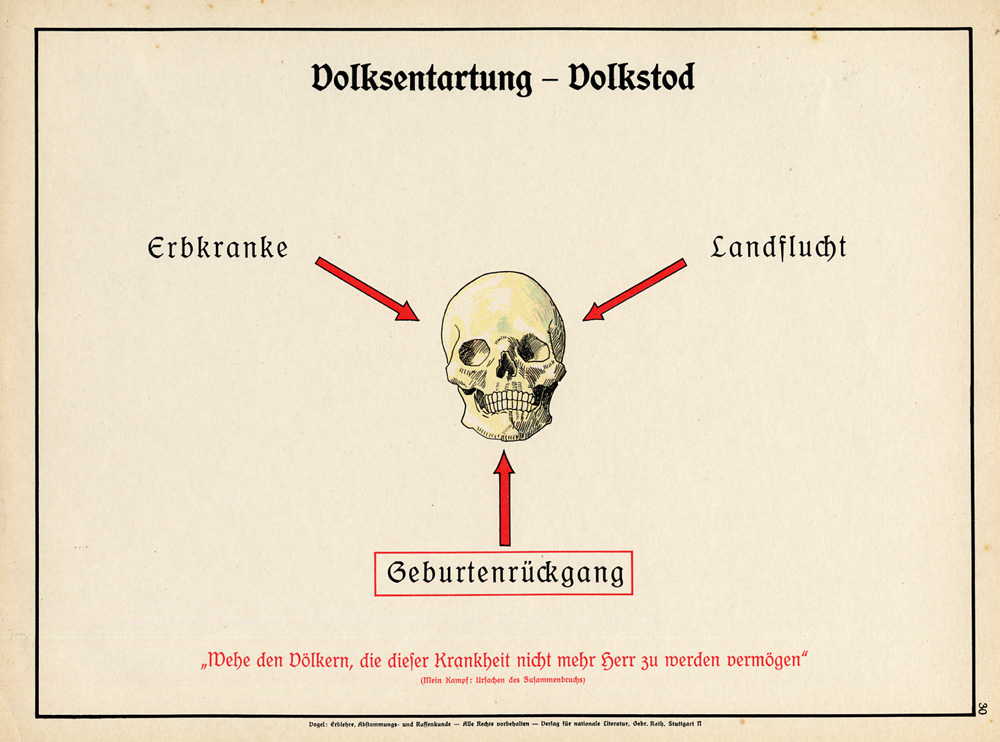
This poster is titled: “People’s degeneration = people’s death.” The point is that a combination of genetic illness and the change from rural to urban life results in a declining population, and therefore the death of the race. At the bottom is a quotation from Hitler's Mein Kampf:
“Woe to the people who are not able to master this illness.”
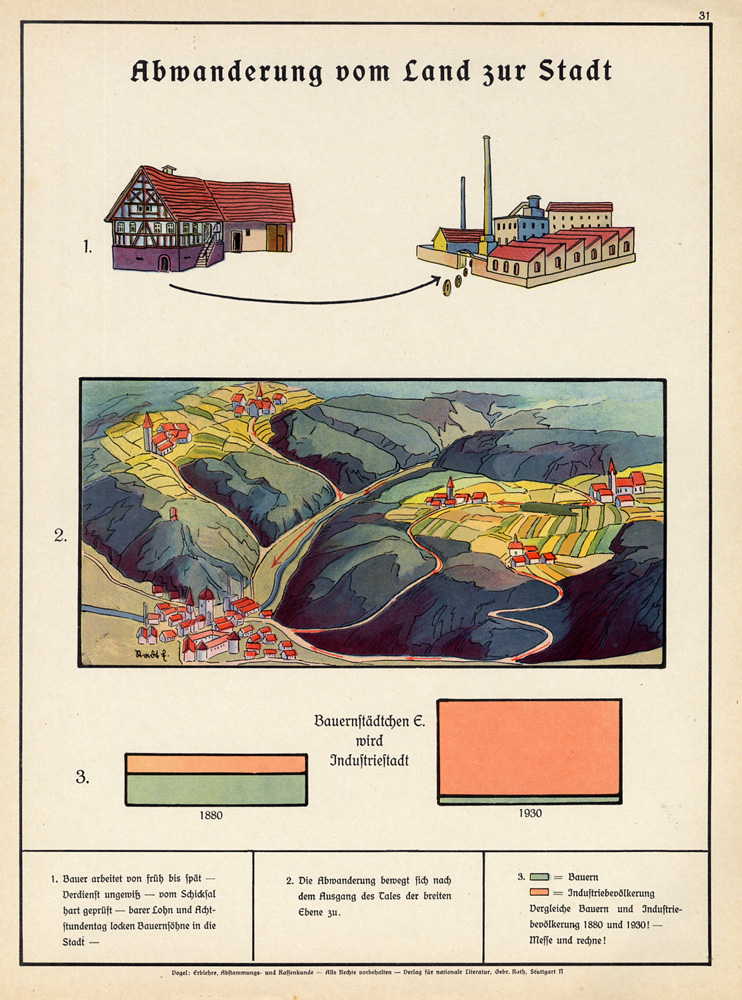
The title: “Migration from the countryside to the city.”
1. “Farmers work long days for uncertain pay. Cash and the eight-hour day lure farmers’ sons to the cities.”
2. The migration flows toward the flatlands of the valleys.
3. A farming village becomes an industrial city. The chart shows the relative percentage of farmers (green) to city-dwellers (pink) in 1880 and 1930.

The title: “Flight from the land — Depopulation of the East.”
Under Hardenberg’s liberal legislation (1812), a great flight from the countryside from the east to the west began, which was greatly increased by Germany’s industrialization after 1870. Slavic blood streamed into the depopulated eastern regions.
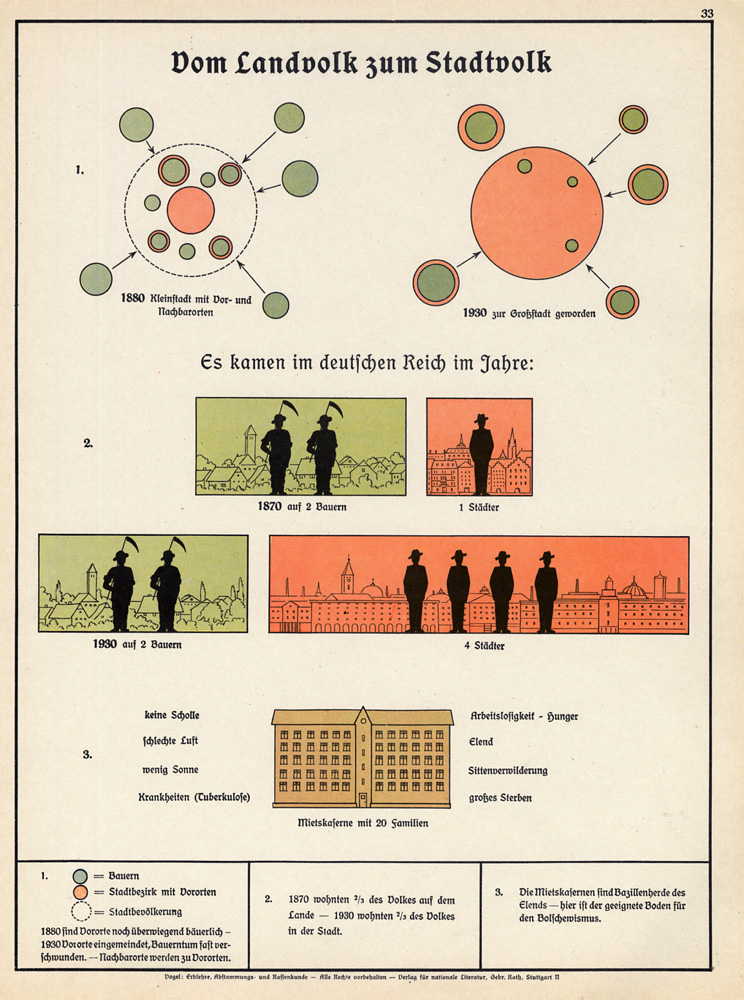
The title: “From an agricultural to an urban people.”
1. In 1880, a small city was surrounded by agricultural villages. By 1930, it had become a big city, surrounded by smaller cities, and there were hardly any farmers left.
2. In 1870, Germany had two farmers for every city-dweller. In 1930, there were four city dwellers for every two farmers. In 1870, two-thirds of the population lived in the countryside. By 1930, the proportion was reversed.
3. “Apartment buildings are the breeding ground of misery. They are fertile soil for Bolshevism.” The illustration shows a building with 20 apartments: “No soil, bad air, little sun, disease (tuberculosis), unemployment and hunger, misery, moral decline, high death rate.”
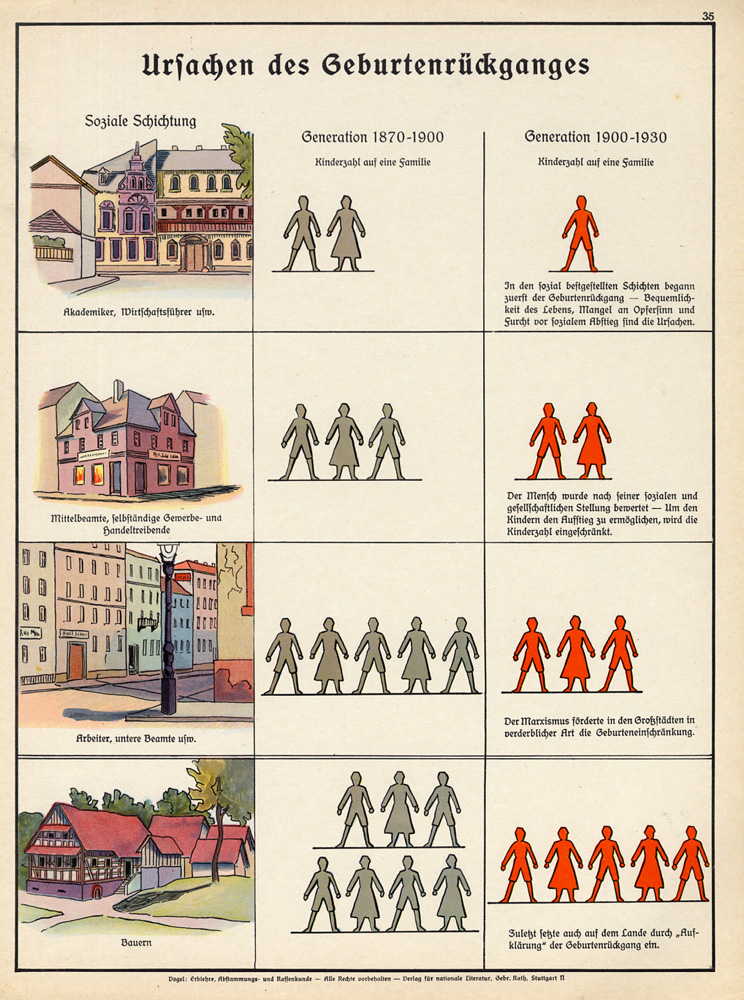
The title: “Causes for the decline in the birthrate.”
The first column is social class, the second the number of children per family between 1870 and 1900, the third the number of children from 1900-1930.
Academicians, business leaders, etc.: Declined from an average of two children to one: “The reduction in the birthrate began with the better-off social classes. A comfortable life, a lack of willingness to sacrifice, and a fear of loss of position are the causes.”
Mid-range civil servants, independent businessmen, and those in commerce: A decline from three to two children. “A person is judged according to his social position. To enable the children to rise, their number is reduced.”
Workers, lower-level government workers: A decline from five to three. “Marxism promoted having fewer children in harmful ways in big cities.”
Farmers: A decline from eight to five. “Finally, ‘education’ also resulted in a decline in the birthrate in the countryside.”
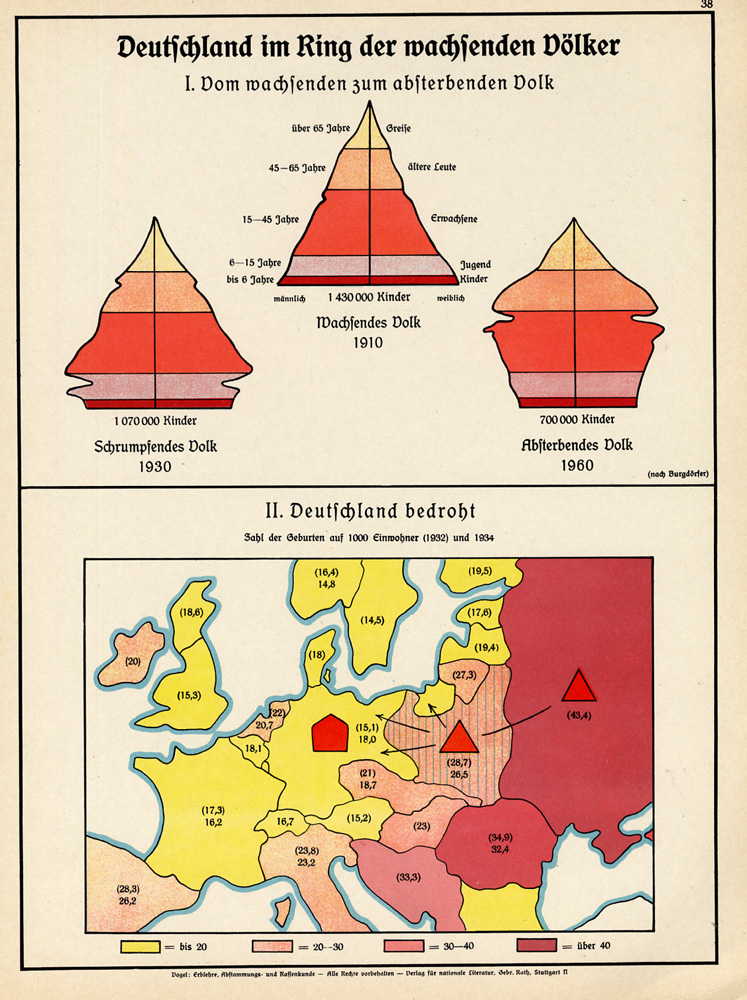
The title: “Germany is surrounded by growing peoples.”
The top shows three “population trees.” The one from 1910 shows a “growing people,” with more young than old (1,430,000 children). The 1930 chart shows a “shrinking people,” with 1,070,000 children. The 1960 chart projects a “dying people,” with only 700,000 children.
The map at the bottom shows the number of births per 1000 of countries around Germany. The title: “Germany is threatened.”

The title: “Genetic illness within the German people.”
The top shows the increase in genetically ill persons in institutions.
The bottom shows projections of what could happen if steps are not taken. In 1930, there are equal numbers of “valuable” families and “inferior” families with four children. After 100 years, the ration will be 23% to 77%, and after 300 years, 4 to 96%.
The quotation in red at the bottom is from one of Hitler’s speeches at the 1937 Nuremberg Rally: “Only he who keeps his people healthy ensures its future.”

The title: “Costs for the genetically ill — social consequences.”
The left frame notes that an institution that houses 130 feeble-minded costs about 104,000 Reichsmarks a year. The right frame notes that that is enough to build 17 houses for healthy working class families.
The text in red at the bottom: “The genetically ill are a burden for the people.”



